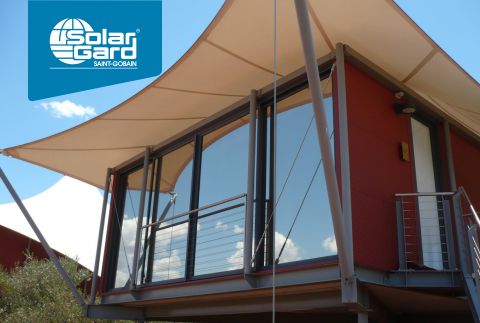UV Radiation Poses a Danger Indoors as Well as Out

While it’s understood that taking sun safety precautions is important outside, few people realise they can sustain sun damage indoors, too. The sun’s ultraviolet (UV) radiation can penetrate windows to reach the skin, accelerating skin aging by several years, as a recent study dramatically shows.
According to an article published in Clinical Interventions in Aging, eight women and two men had significantly more wrinkles and sagging skin on one side of the face, even though they worked indoors. The side of the subjects’ faces that was habitually closer to a window exhibited more signs of sun damage (“asymmetrical facial damage”), and ultraviolet A (UVA) rays are believed to be the culprit. While both UVA and UVB rays can harm the skin and lead to skin cancers, UVB is effectively blocked by glass. However, at least 50 percent of UVA radiation can pass through windows. (Car windows have been proven to let in more than 60 percent.)
Researchers led by Philippe Humbert, MD, head of the Department of Dermatology at the University Hospital of Besançon and Director of the Laboratory of Cutaneous Biology at the University of Franche-Comte, also in Besançon, France, recruited people who identified themselves as having asymmetrical facial damage, and had dermatologists evaluate subjects’ skin.
In the majority of cases, the subjects either drove vehicles for a living, or had jobs that required several hours of driving daily. In cars, windshields are laminated, and filter out UVA, but side and back windows are not. As expected, the seven people with jobs that required significant amounts of driving had significantly more direct UVA exposure on the side of the face closer to the driver’s side window. This pattern was seen in non-drivers as well: For instance, a shopkeeper had more signs of aging on the side of her face regularly closer to the store window.
The researchers found that subjects’ wrinkles under and around the eyes and on the cheeks were worse on the more UVA-exposed side of the face; skin texture was also rougher. The results also suggested that skin on the more UVA-exposed side of subjects’ faces may be duller, dryer, and slacker, and the crow’s feet deeper. As Dr. Humbert told Sun & Skin News, “This study shows that chronic exposure to UVA radiation accelerates the aging of skin five to seven years.”
It is important to remember that in addition to accelerating skin aging, cumulative UV exposure also increases your risk of skin cancer.
As the authors concluded, “This study does suggest that daily protection against non-deliberate UVA exposure indoors, as well as outside, may be an important function of any daily sunscreen.” The Skin Cancer Foundation recommends using sunscreens with an SPF of 15 or higher, and some combination of the following UVA-screening ingredients: avobenzone, ecamsule, oxybenzone, titanium dioxide, and zinc oxide. The Foundation also advises you to have special UV-protective film applied to your rear and side windows.
Original article: Skin Cancer Foundation



